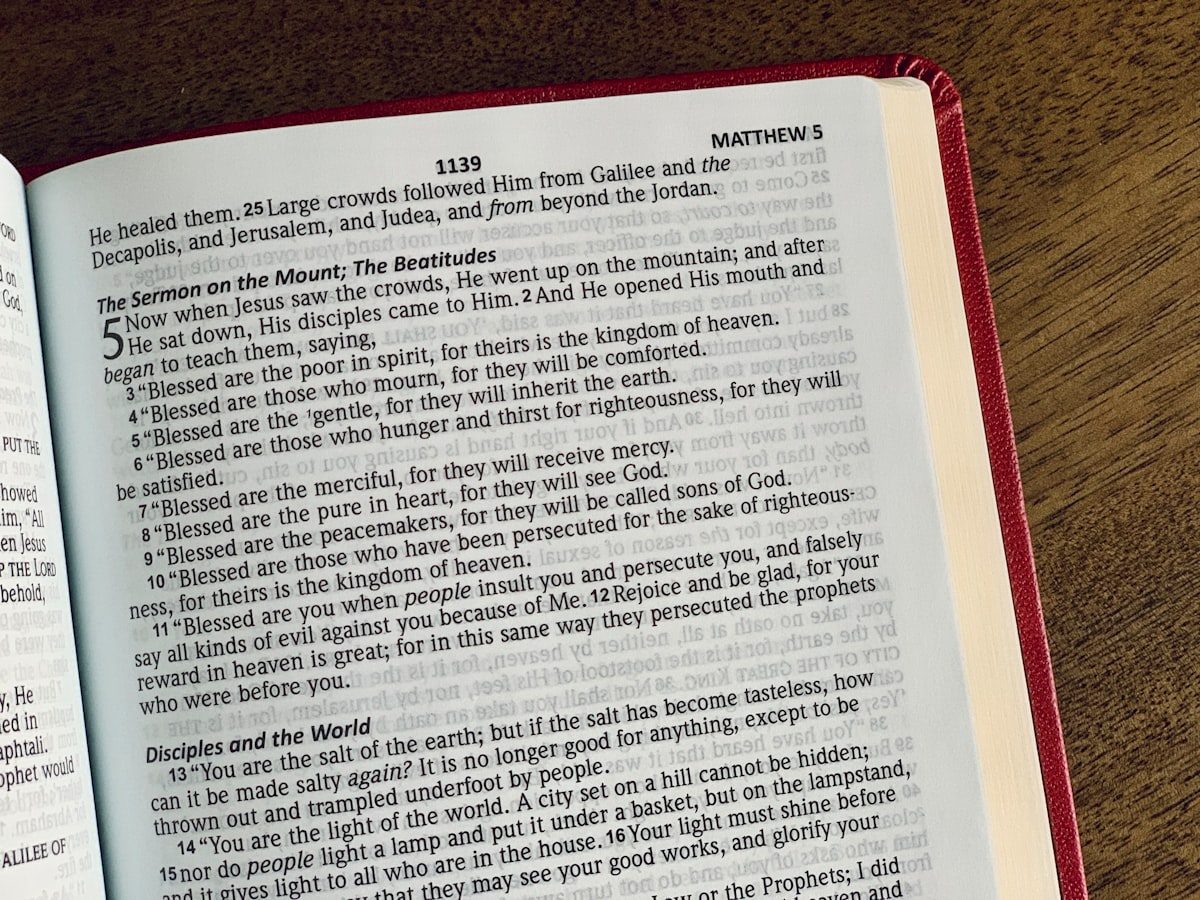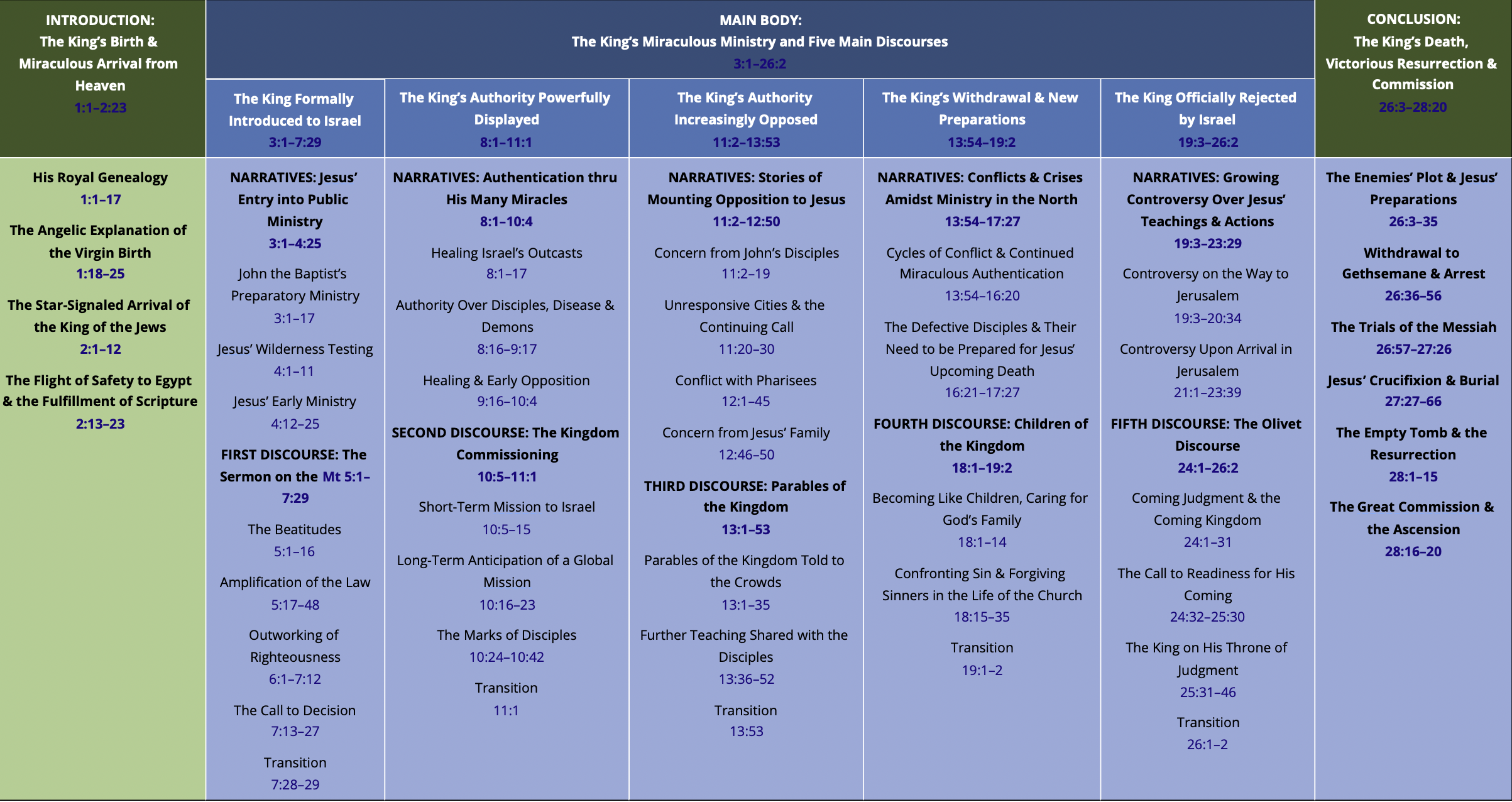Questions About the Gospel According to Matthew
Answers to common questions asked about introductory issues concerning the Gospel according to Matthew.

1. Who does the earliest extant external evidence suggest wrote Matthew's Gospel?
Matthew is formally anonymous. The title "Gospel of Matthew" is clearly early or original.
The easliest external evidence is from a statement of Papias in his Expositional of the Lord's Sayings. Irenaeus (ca. 130–200) claimed that Papias was a disciple of the apostle John, and Papias claims to have received his information directly from those who personally heard Jesus's closest disciples.
Papias's works have not survived but are quoted by Eusebius in the early fourth century. Papias wrote, "Therefore, on the one hand Matthew arranged in order the sayings in the Hebrew dialect; on the other hand, each translated these as he was able."[1]
The early church unanimously affirmed the first Gospel was atuhored by the apostle Matthew, and it was not seriously challenged until the late nineteenth century.
2. Did Matthew write his Gospel in the Hebrew language?
Many scholars dispute Papias's claim that he Gospel was first written in Hebrew. The numerous OT quotations in Matthew do not reflect a single text form. If Matthew wrote after Mark, it is unlikely twhile using Mark's Gospel, Matthew would first write in Hebrew or Aramaic. They do not see the Greek of Matthew appear to be translation Greek. But there are hints of Hebraic influence that suggests Papias could have been correct about a Hebrew original. This debate bears little doctrinal consequence.[2]
3. When did Matthew most likely write his Gospel? Why is an early date significant?
Some contemporary NT scholars give a late composition date between the mid to late 80s. One reason is the disbelief that Jesus could have predicted the fall of Jerusalem (AD 70).
External evidence requires a first-century date of composition since allusions to Matthew are seen in the writings of Ignatius (ca. AD 35–110) and Polycarp (ca. AD 69–155). If one believes in Markan priority, then Matthew must postdate Mark. If the book of Acts is dated in the early 60s, and Mark preceded Luke, then Mark likely was written in the early to mid-50s.
In Matthew 17:24–27, the two-drachma temple tax was described. It is doubtful Matthew would have included this account after the destruction of the Jerusalem temple since it was Rome who collected the temple tax afterward.
An early date (before AD 70) is significant for two reasons. First, an early date is more consistent with Matthean authorship than a late first-century date. Second, an early date tends to confirm the historical reliability of the Gospel accounts.
4. What are the two most likely locations where Matthew's Gospel may have been written?
The theories of origin that have gained the most scholarly support view the Gospel as written in either Palestine or Syria.[3] Those who believed Matthew wrote the Gospel first in Hebrew will likely believe it was written in Palestine. Jerome (ca. AD 345–420) believe it was written in Judea.
Others believed Matthew wrote in Antioch in Syria since Matthew combined both Jewish and Gentile interest, Antioch had a large Jewish population, and Matthew was first quoted by Ignatius, bishop of Antioch (ca. AD 35–110).[4]
5. To what geographical area did Matthew write?
For those who accept a Palestinian provenance, they believe Matthew was writting to the church in Palestine. For those who accept a Syrian provenance, the church in Syria is the likely destination.
6. What are the primary and secondary purposes of Matthew's Gospel?
The primary purpose of Matthew's Gospel is the identity of Jesus. It serves as a theological biography. Jesus is the Messiah, the long awaited King. Jesus is the new Abraham, the founder of a new spiritual Israel. Jesus is the new Moses, the deliverer and instructor of God's people. Jesus is the Immanuel, the virgin-born Son of God.
A secondary purpose is to serve as a manual for discipleship. Matthew's topical arrangement of Jesus's discourses and his emphasis on ethical demands provide guidance for Christian living.
7. What is the most prominent feature of Matthew's structure?
One prominent feature of the Gospel of Matthew is the pattern of narrative segments followed by major discourses. The major discourses conclude with the statement, "And when Jesus finished." (7:28–29, 11:1; 13:53; 19:1; 26:1)
8. Which phrase used by the evangelist enables the interpreter to identify the overall structure of Matthew's Gospel?
Matthew used the phrase "from that time on Jesus began to..." in Matthew 4:17 and 16:21. These transitional statements divide the Gospel into the introduction (1:1–4:16), the body (4:17–16:20), and the conclusion (16:21–28:20).
9. What are two instances in which Matthew used numerical symbolism to make his theological point?
By forming five sections (narrative and discourse), some see this as a numeric pattern that mirrors the five books of Moses in the OT. The Hebrew Psalter contains five books. Another instance of the number five in Matthew is the inclusion of five women in the opening genealogy in 1:1–17: Tamar (v.3), Rahab and Ruth (v.5), Uriah's wife (v.6), and Mary the mother of Jesus (v.16).
Another use of numerical symbolism involves the genealogy of Jesus and King David. The numeric value of the consonants of David's name was daleth (four), waw (six), and daleth (four). This gives a sum of fourteen. In Hebrew gematria (numerical symbolism), the number fourteen represents King David.
10. What are the chapters in Matthew that correspond to the Sermon on the Mount and the final eschatological discourse?
The Sermon on the Mount is found in Matthew 5–7. The Olivet Discourse (eschatological discourse) is found in Matthew 24–26:2.
11. Which feature is particularly prominent in Matthew 1–4?
There is a focus on fulfillment quotations showing that Jesus is the Messiah in Matthew 1–4.
- Matthew 1:23 points to the fulfillment of Isaiah.
- Matthew 2:6 points to Micah.
- Matthew 2:15 points to Hosea 11.
- Matthew 2:18 points to Jeremiah 31.
- Matthew 3:3, referring to John the Baptist, points to Isaiah 40.
- Matthew 4:15–16 refer back to Isaiah 9.
Andreas J. Köstenberger, L. Scott Kellum, and Charles L. Quarles, The Cradle, the Cross, and the Crown: An Introduction to the New Testament, 2nd ed (Nashville, TN: B & H Publishing Group, 2016), 225. ↩︎
Köstenberger, Kellum, and Quarles, 229. ↩︎
Köstenberger, Kellum, and Quarles, 232. ↩︎
Köstenberger, Kellum, and Quarles, 233. ↩︎
Bashoor, M. Scott. Visual Outline Charts of the New Testament. B&H Academic Digital, 2016. ↩︎





